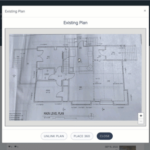Shooting 360° video requires approaching a project from a totally different mindset than “traditional” video. The main difference is obvious – there is no specific focal point as the lenses are capturing everything, and this is where the majority of problems stem from of course.
Not in any necessary order, here are some of the things you need to be aware of and some possible “fixes” and suggestions.
- One of the biggest issues of 360° / VR is the inescapable fact that it makes some people feel physically ill. Now I am no scientist or student of the mechanics of the brain, but I am willing to bet the crux of this is to do with motion. Anyone who has ever suffered from seasickness will know instantly what I mean. For this reason, make sure you don’t – EVER – walk around with a 360° camera doing handheld shots. You might get by with a gimbal, but the surest way to get steady footage is to use a tripod at all times. Which leads us neatly into …
- As a 360° camera picks up almost everything, if you are tripod mounted then it’s pretty certain that imagery of the tripod will end up in the footage you shoot. This is Not Good. The way around this is to use a light stand as against a full on tripod which obviously has the assorted levers and things hanging of it. But why not use a monopod you ask? Because …
- If you are holding a monopod, then YOU will end up in the shot and this is usually not the way you want the footage to look is it? Generally, when shooting 360° video, you need to be out of sight of the camera to get clean footage. But, you say, how can I then know what I am shooting? Well …
- Make sure the camera you purchase has an app for your smartphone or tablet. We use QooCam, VUZE and Ricoh cameras which all offer this functionality letting you control the camera and see what is in “frame” so to speak (although of course the “frame” is a sphere not a rectangle as there are multiple lenses getting specific areas of the whole scene and these are then “stitched” together which …
- … can also cause issues as sometimes, depending on the scene, the “stitch” can be seen and if there is an object in that stitch line, it can appear distorted or fuzzy. The antidote (as much as possible) is to shoot some footage while you walk around the camera and then render that footage out so you can see if and where there are any stitch line issues. As these cameras mature, along with the relevant software, thankfully this is becoming less and less of a problem, but it is wise to be aware of it along with another issue with 360° camera lenses and that is to …
- … make sure your lenses are spotless with no smudge marks. Yes, I know we habitually do that with normal cameras and camcorders, but as 360° camera lenses tend to protrude and bulge outwards, they are even more susceptible to a random finger mark or worse.
- Speaking of which, 360° footage means big file sizes so make sure you have adequate capacity SD cards installed and on hand. You’ll also want the fastest cards you can buy by the way. Less than stellar transfer rate cards may cause the camera to stop recording without warning.
- Despite the fact that most 360° cameras shoot in 4K (or higher), due to the nature of the beast, it is highly unlikely that you’ll have the same quality of footage as you’d expect from a 4K camcorder or dSLR / mirrorless by the way. That’s just the way it is at present, but again, the quality is getting better and better as the technology improves.
- Actual camera placement is also important with 360° shooting. Generally, you’ll want to have the camera shooting at eye-level so the viewer feels comfortable. Having it low down can make the viewer feel small. Unless of course you are filming the lifestyle of a frog from its viewpoint or something in which case all rules are thrown out. But you get my drift.
- It also makes no sense to have any object / subject closer than a metre from the camera. It will just look distorted.
-

Sennheiser MKE400 And finally, there is of course audio. As the scene is coming from “all around”, special attention has to be made with audio to get a decent ambience to it. For speech, a clip on mic is suggested, We like the Sennheiser Memory Mic for this sort of stuff or at the higher end, the Sennheiser XWS-D digital wireless mic system. For ambient sound, the Sennheiser MKE400 will admirably do the job although if you have the bucks to spare, the MKH series can’t be beat. And for the REALLY serious VR proponent, the AMBEO VR Mic is the pinnacle of course.
Footnote: A great place to put your 360 footage for others to see or for you to share is Momento360. Its free for most options too. We edit ours in Vegas Pro before sending it here.
Posted from Momento360 Using the MomentoPress WordPress Plugin



